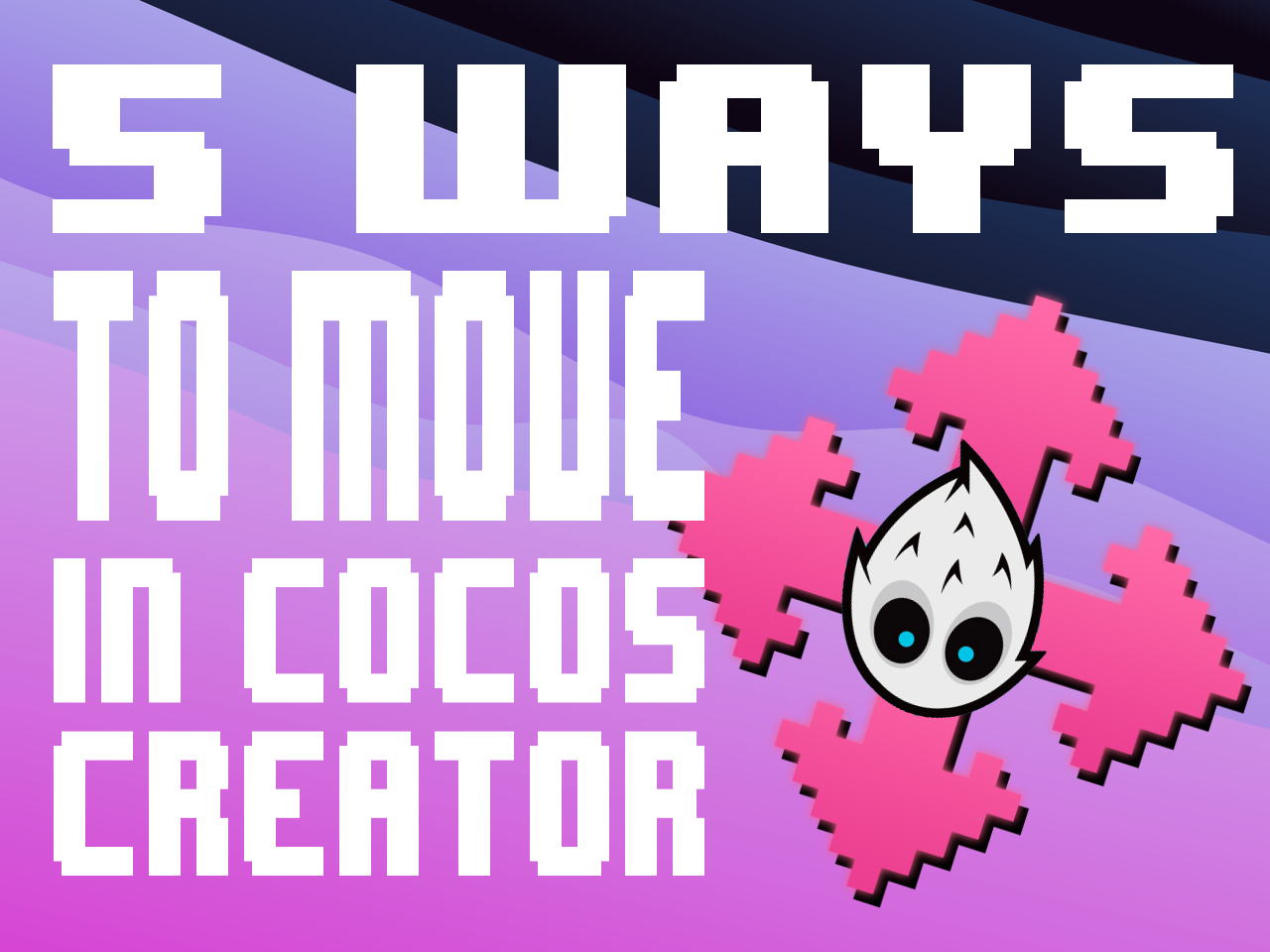
Five ways to move an element in Cocos Creator
One of the first things you'll want to do for your game is probably to move something from point A to point B. There are various ways to move an element in Cocos Creator, some affect the ridigBody and the others on the position of the Node, based on what you want to achieve you might choose one or another, let's see them together.
1. Position
Changing the position of an element is probably the easiest solution, just assign a new position to the Node. The position is relative to the parent Node. Using position is like teleporting the element to a new position so it's not affected by the RigidBody or the Physics of the game. Strange things can happen if you use position and physics together (for instance partial or no collisions). You can use setPosition or setWorldPosition to set the position of the Node.
// get the current position
const newPosition = this.node.getPosition();
// set the new position
this.node.setPosition(new Vec3(newPosition.x + 10, newPosition.y + 10));
You can choose to use setPosition or setWorldPosition based on the coordinate space you want to use. setPosition uses the coordinate space of the parent Node while setWorldPosition uses the coordinate space of the World.
this.node.setWorldPosition(new Vec3(0, 0));
2. Translation
Similar to position, but perform a translation instead of a teleport. The translation is relative to the parent Node. You can use a second parameter nodeSpace to set the coordinate space WORLD or LOCAL.
this.node.translate(new Vec3(ammount, 0), NodeSpace.WORLD);
3. Force
The force is applied to the RigidBody of the element. You can use applyForceToCenter or applyForce to apply the force to the center of the RigidBody or to a specific point. This is a literal pushing motion where the bigger the mass of the Object, the slower it will speed up. You can use a second parameter wake to wake up the RigidBody if it's sleeping. Force Add a continuous force to the rigidbody, using its mass.
this.rigidBody.applyForceToCenter(new Vec2(ammount, 0), true);
4. Impulse
The impulse is applied to the RigidBody of the element. You can use applyLinearImpulseToCenter or applyLinearImpulse to apply the impulse to the center of the RigidBody or to a specific point. You can use a second parameter wake to wake up the RigidBody if it's sleeping. Impulse Add an instant force impulse to the rigidbody, using its mass.
this.rigidBody.applyLinearImpulseToCenter(new Vec2(ammount, 0), true);
5. Velocity
The velocity is applied to the RigidBody of the element. You can use linearVelocity to set the velocity of the RigidBody. You can use a second parameter wake to wake up the RigidBody if it's sleeping.
this.rigidBody.linearVelocity = new Vec2(velocity.x - ammount, velocity.y);
Demo
You can move with arrow keys and choose if update in a loop or not.
The repository of the project is here: https://github.com/theRenard/cocos-engine-5-ways-to-move